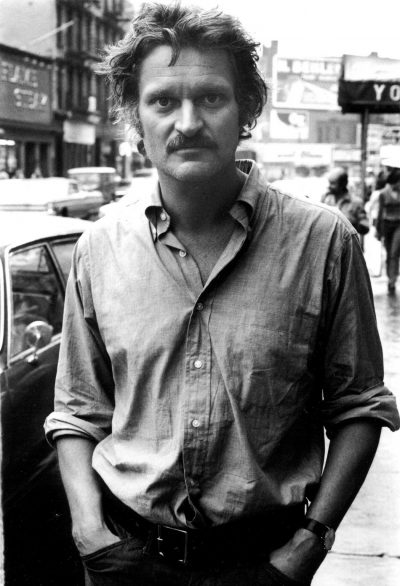I was introduced to John Ashbery’s poetry in the summer of 1971, by a beautiful young American poet living in London. We met at a church jumble sale in Belsize Square. Her flat was across the street. I woke up on her couch later that day and we coupled rabidly again, since I couldn’t remember the first round. Afterwards, sipping her fine American coffee, I began to peruse her bookshelves, dense with poetry. Writers I had never heard of, Frank O’Hara, Ted Berrigan, Ed Dorn, John Ashbery, Michael Brownstein, Kenward “Kenny’ Elmslie. She gave me a reading list, and a handful of tasteful small press editions. Dorn’s Gunslinger, with its Talking Horse and acid flashbacks, was a revelation, (the copy she loaned me 48 years ago still sits on my bookshelf), alongside Berrigan’s cut-up Sonnets, Brownstein’s Highway to the Sky [“what is the name of the sweet machine?”] and Elmslie’s extraordinary Orchid Stories, inter alia. But Ashbery’s writing [Some Trees, the Tennis Court Oath], its gorgeously vivid language opaque as a stained glass window, remained impenetrable to my disordered mind. And yet I was so entranced by the juice and jouissance of the so-called ‘New York School’ that by summer’s end I had wrangled enough money for a one-way ticket to the city itself. And here I have stayed, lo these many years.

Eager to penetrate Elmslie’s Sewing Circle, and get published in Z magazine, I avidly scanned A Nest of Ninnies [ Dutton, 1969], Ashbery’s campy collaboration with James Schuyler, but its mendacious tearoom chatter only served to direct me to Schuyler’s marvelous poetry, rather than a deeper comprehension of Ashbery’s magisterial verve and nerve. “A few days are all we have,” indeed.
I was not and never have been a working homosexual, though l dressed in a flamboyant ’70s style that frequently invited both praise from the gays and phobic rage from red-blooded Americans. And although we were never officially introduced, John Ashbery himself sidled up to me at one of Kenward’s notorious Greenwich Avenue parties, and asked if I was interested in some quick philately.
“Stamps mate? Not really,” I replied in an atrocious Yorkshire accent. [Later M. Brownstein gleefully informed me that Ashbery had described me as a ‘pasty-faced English lout’, which I took as a compliment.] That night I only had eyes for Ruth ‘Death Car Girl’ Kligman, holding court across the room, perfectly embodying my favorite Elmslie phrase, ‘Shirley Temple surrounded by mountain lions’. After promising I would not ask about the ‘accident’, we stumbled to her home on 14th Street, where I soon fell into an alcoholic swoon, and awoke dissatisfied, and ignorant of the fact that this second floor loft with its intimate view of the Dominican Sisters’ convent opposite, was Franz Kline’s former studio.
In 1998 the late lamented poet Scott Cohen gave me a hardcover copy of Flow Chart for my birthday, and though I loved Trevor Winkfield’s Stuart Davis-on-acid cover, and certainly concurred with Scott’s ringing endorsement of Ashbery’s genius, still my heart wouldn’t start when I read the Chart. Perhaps there weren’t enough rhyming lines. Or I thought a sestina was an afternoon nap in Madrid. Or maybe you need an M.A. to really ‘get’ JA.
Still I kept buying each new book, admiring the poetic engine that kept running till the end. Even if JA had been only a founding editor of Locus Solus, an excellent art critic, a man immortalized by Frank O’ Hara in At the Old Place* and many other poems, I would, and indeed I do today, chastely kiss his shapely ass.
* “How ashamed they are of us! We hope.”
–Max Blagg
Essays
nice to sourcev
well
nice atitude
Good blog thanks
Better blog thanks
Thanks for this
so good